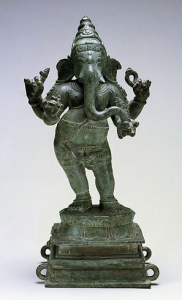The Toledo Museum of Art Returns Stolen Artifacts
Today we bring you an article by Carlos Lu, a Tufts Master’s candidate in Museum Education. For the course Museums Today: Mission and Function, the foundation course required for all Tufts Museum Studies students, students research and report on a recent article on museums in the news.
The Toledo Museum of Art will return four objects from their collection as well as over 100 items donated to them because they believe that they were stolen from their home country of India. This is indicative of the need for greater care in provenance research upon accessioning of items, that much is clear. The Toledo Museum of Art has not released how much the museum paid for the items it acquired from Subhash Kapoor, but the National Gallery of Australia also did business with the illicit art dealer and have revealed the costs they spent on their transactions. In total, over ten years, the museum paid over $11 million for the various pieces of art, with one particular item – a dancing Shiva – going for $5 million alone.

Photo Credit: The Blade
This statue, “Ganesha,” is one of the objects that the Toledo Museum of Art purchased from Subash Kapoor.
Photo Credit: The Blade
It is considered unlikely that the National Gallery of Australia is going to see a return of this money as Subhash Kapoor, the donor of the artwork in question, is facing a 14 year jail sentence and has had his finances frozen by three different governments. For a museum that is an incredible sum of money. To put the value into perspective, the current salary for a museum professional in Australia is approximately $80 thousand to $90 thousand a year, and that is being extremely generous and providing for a full time position. If a single individual were hired at this rate whose purpose it was to solely conduct provenience research, a museum would not only save the great sums of money spent on these purchases, but more important a museum would be able to save face from having even accidentally dealt in stolen antiquities. While it may be a lofty and laudable goal to have a position solely dedicated to ensuring the propriety of museum accessions, it is likely not a goal that can be fiscally justified to anyone outside of the field.
But beyond simply doing the job better, what can a museum do in order to pierce the veil of forgeries and purposeful miscommunication? Subhash Kapoor was involved in one of the largest antiquities trade cartels in recent history, requiring India, Singapore, and the U.S. to perform a collaborative investigative effort that culminated in “Operation Hidden Idol”, a raid across the U.S. by government forces. If that is the quality of analysis required to determine proper provenance, what hope does any museum institution have? The Toledo Museum of Art’s staff has less than 100 full time employees with no particular individual whose sole purpose is to research the provenance of acquisitions. That doesn’t compare to the agencies behind Operation Hidden Idol or the forgers and conmen of the antiquities cartel the operation took down. So where does that leave museums?
This concept is part of the preventative care required to ensure that a museum is not liable to financial or moral losses should a particular item in its collection be found to be illegal. The only thing the Toledo Museum of Art, and any other institutions that may have purchased from Subhash Kapoor, can do now is return the illegal artifacts to their rightful homes. But this act is not as simple as it may seem. Currently the Toledo Museum of Art is working with the Indian Embassy here in the United States to see that the goods it is deaccessioning are returned to India, but is that enough for the museum to do? There is the possibility that, even after trying the various legal channels that are available, the true home of these stolen objects is not found. Returning the art to its original location is clearly the desired option, but provided that is not possible, then the Toledo Museum of Art’s responsibility ought to be to keep the object rather than return it to the Indian government. An alternative to this solution to satiate nationalistic claims is for the Toledo Museum of Art to make arrangements not with the Indian government, but with an institution within India that can dedicate itself to providing the same level of care for the objects or better.
The Toledo Museum of Art and several more museums across the world have fallen prey to one of the largest illegal art trade cartels in the past century. This illegal art trade will not go away any time soon. It cannot be denied that the museum has a part to play in the continuation of the illegal antiquities market. With this in mind museums must do their utmost best to create an air of scrutiny around their purchases, to demonstrate their willingness to examine the validity of the provenience of their purchases. If museums can show that they will not play any part in anything remotely suspicious with regards to art sales, then perhaps that much change can be made towards stopping the trade all together.
For more information on this topic, please see these articles.